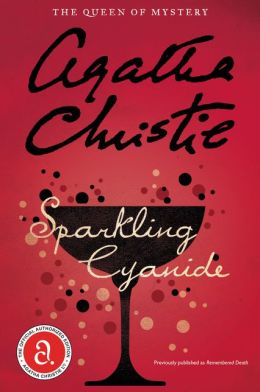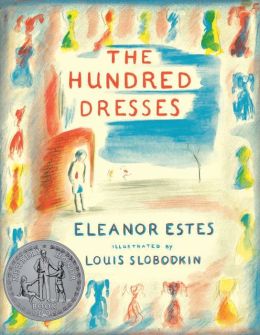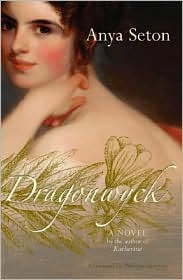Most entries to the Eurovision song contest are frothy pop tunes, but this year’s contribution from Ukraine addresses Stalin’s deportation of the entire Tatar population of Crimea in May 1944. It may seem an odd choice, but is actually very timely if we dig a little into the history of mass repression and inter-ethnic tensions in the region. Almost a quarter of a million Tatars, an ethnically Turkic people indigenous to the Crimea, were moved en masse to Soviet Central Asia as a collective punishment for perceived collaboration with the Nazis.
The post The history behind Ukraine’s 2016 Eurovision song appeared first on OUPblog.
Green for Danger. Christianna Brand. 1944. 256 pages. [Source: Bought]
Reading Green for Danger was like watching a soap opera--for better or worse. It definitely had its enjoyable moments now and then. But I can't say it was really a great fit for my reading taste. (Not that it was smutty. Just a lot of messy, oh-so-dramatic twists and turns, some of which related to their love lives.)
I wanted to read Green for Danger because it's a vintage mystery published during World War II. It is also set during the war and focused on the war. All of the characters--all of the suspects--work in a hospital. Readers get a behind the scenes look at war-time England. It had the potential to be quite good: fascinating even.
Was I disappointed? Yes and no. I would have liked more depth to the characterization with perhaps a tiny bit less drama. That being said, there was plenty of suspense and mystery. And looking back, there were plenty of clues throughout the book. It wasn't a great read for me, but, it wasn't all that bad either.
I also watched the movie adaptation of Green For Danger (1946). I found myself enjoying it more than the book. The plot is different from the book in some ways, but I thought it worked well. If you like watching mysteries, I'd definitely recommend it.
© 2015 Becky Laney of
Becky's Book Reviews
Sparkling Cyanide. (Colonel Race #4) Agatha Christie. 1944/2002. HarperCollins. 288 pages. [Source: Bought]
It's been a while since I've last read Agatha Christie. Though this one did not star Hercule Poirot or Miss Marple, I ended up LOVING it. Though I should add that my 'favorite' Christie mystery is usually--though not always--one of the ones I've most recently read. It's not unusual for my 'favorite' to change frequently.
Rosemary Barton is the victim. That isn't a spoiler. She's been dead almost a whole year when the novel opens. Sparkling Cyanide is written from multiple perspectives: six, I believe. Readers know that one of the six could in fact be the murderer, or at the very least know the murderer and are keeping quiet.
One other thing. Rosemary Barton's death is officially a suicide. It was never taken on as a murder case. Until....
There is so much I CAN'T say about Sparkling Cyanide. I love reading mysteries. I do. Vintage mysteries especially. And Agatha Christie is one of my favorite authors to read. But I can't say I love reviewing mysteries. It's such a tricky thing to attempt. Because spoilers ruin mysteries more often than not. So, I'd definitely recommend Sparkling Cyanide. (It was originally titled Remembered Death in America.)
© 2015 Becky Laney of
Becky's Book Reviews
The 100 Dresses. Eleanor Estes. Illustrated by Louis Slobodkin. 1944/2004. Houghton Mifflin Harcourt. 96 pages. [Source: Library]
Two girls learn a little bit about empathy in Eleanor Estes' classic story The 100 Dresses. Wanda Petronski wears the same dress day after day. For the record, it is always clean. But still the other kids in her class--particularly the girls--can't help teasing or bullying her. She has a "weird" last name; she always wears the same clothes; she talks about having a 100 dresses at home. Peggy and her good friend, Maddie, the heroine, started the "game" of teasing her. But Maddie and Peggy both realize the error of their way, Maddie especially. But will their change of heart come too late? Will they be able to tell Wanda how very sorry they are for how they've treated her? Will she forgive them?
I liked this one very much. I'd definitely recommend it. I enjoyed both the text and the illustrations.
Have you read The Hundred Dresses? What did you think?
© 2015 Becky Laney of
Becky's Book Reviews
Dragonwyck. Anya Seton. 1944/2005. Chicago Review Press. 352 pages.
It was on an afternoon in May of 1844 that the letter came from Dragonwyck. Miranda Wells is the foolish heroine of Anya Seton's Dragonwyck. This farm girl has much to learn, and her trusting nature combined with her restlessness is just asking for trouble. The novel opens with Miranda being invited to visit her cousin, Nicholas, and his wife, Johanna, and their daughter, Katrine, in their home, Dragonwyck. Though cousins, the two have never met. For the Van Ryn's are quite wealthy, and the Wells are at best poor relations. But the couple appears--at first--to be looking for a companion for their daughter. Someone not quite a servant, but not quite a real guest either. The wealth and luxury of their lifestyle--especially in comparison to the only lifestyle she's ever known--life on a farm has Miranda thoroughly charmed. Everything that Nicholas says and does just wows her. He seems to be so perfectly, perfect. She just can't help herself, she finds herself falling for him. On her part, I do feel it's just silliness, with more innocence to it than real intent to break up a marriage. But the wife, well, she is unhappy and uncomfortable with Miranda being there. She didn't expect her to be so young, so beautiful, so ready to be charmed by her husband.
How does Nicholas feel about Miranda? How does Nicholas feel about his wife? his daughter? How does Nicholas feel about anyone else? Well. Readers can draw their own conclusions, perhaps. But needless to say, this reader was NOT charmed by Nicholas. He didn't seem all that swoon-worthy to me. And AFTER his wife's oh-so-convenient-death, well, my impressions changed even more--but not in his favor. A true romantic hero, in my opinion, would NEVER EVER propose marriage to a young woman while his dead wife was still in the room.
So do you think Miranda lives happily ever after with Nicholas?!
It's true I was never bored with Dragonwyck. But I also never found true satisfaction with it. Miranda was a frustrating heroine, to me, because she was just too
stupid immature. She wasn't all that smart, and she wasn't all that good. (With goodness being a virtue.) There was very little to love in Miranda. That being said, I definitely felt something for her. I pitied her. Miranda's choices weren't all that smart. But NO WOMAN deserves to be treated the way she was treated. And I definitely wanted Miranda to be saved--to either save herself or to be rescued by some good soul. Nicholas. Well, what can I really say about him?! I didn't find him appealing at all. It was just so easy for me to hate him. His flaws are too many to even begin to list. And his strengths? Well, I can't think of any!
Have you read Dragonwyck? What did you think of it? Did you like it? love it? hate it? Do you think it's fair to compare it to
Jane Eyre and
Rebecca? I definitely see how Dragonwyck is a gothic romance.
Here's how Philippa Gregory's afterword begins, "At the very opening of this far-fetched, romantic novel, Anya Seton takes a great risk with her readers: she shows a foolish young woman reading a far-fetched, romantic novel and gently mocks both the genre and the readers."
Here's the part where I disagree with her:
J

Young Bess by Margaret Irwin. 1944/2010. [March 2010] SourceBooks. 400 pages.
She had been allowed to come out to the royal flagship, and had been eating cherries and strawberries dipped in wine.
Young Bess follows the adventures and misadventures of the Tudor family. The title leads you to believe the focus is on Elizabeth and Elizabeth alone. But that isn't quite the case. It is the story of some rather turbulent years (well, most years were turbulent with the Tudors I've found!) in English history.
This book will see the death of King Henry VIII, Catherine Parr (the former Queen), Tom and Edward Seymour, and Edward VI. It stars the two Seymour brothers battling for power, a young Jane Grey, a young Elizabeth (of course), and a not-so-young Mary. Edward VI does enter into it a tiny bit. But not all that often, whether that's because he had little to do with his sisters and cousins or if he just didn't do much of anything, I don't know.
Did I like this one? Mostly. There were places where it was cleverly and amusingly written. Where it was just fun to read. There were also a few places where it was a bit boring. I did think it was well-written. And I do think fans of historical fiction will probably like it. Especially those who love to read anything and everything written about the Tudors.
There will be two others in this series.
© Becky Laney of Becky's Book Reviews









I have always meant to read Anya Seton, but I haven't actually accomplished it yet...
Seton has been an enjoyable read so far. This is my second of her novels I've read. I've yet to love, love, love one of her books. But her writing is anything but boring...so I haven't really minded just liking them :)
I read Dragonwyck a while ago and I felt the same as you. I was never bored with, but it didn't blow me away either. It was an ok read and I will try another of her novels in the future.